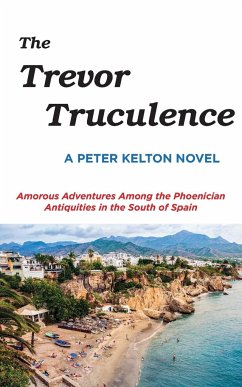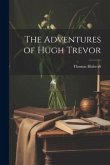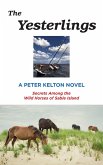The Trevor Truculence Amorous Adventures Among the Phoenician Antiquities in the South of Spain This novel thrust an ancient Spanish fishing village that dates from the Phoenician era about 800 BC suddenly into the modern world as foreigners disrupt traditions and import radical change. Conflict arises when an American writer (Paul) returns to the village after a10-year absence to fall in love with a former neighbor, Gerda. Together they investigate a conspiracy led by Gerda's former lover Trevor, a British adventurer, to exploit a hidden treasure of rhino horns buried deep in a cave thousands of years ago by Phoenicians who slaughtered the white rhinos in the Congo. Trevor is obsessed by the rhino horns' aphrodisiac qualities and has linked it to the sexual performance of the African bonobo monkey and the sterling good health of the villagers. Paul and Gerda discover in Trevor's endeavors a complex tale of literary fiction, adventure, mystery, suspense, myth, romance and Spanish history unlike any other ever written. As in earlier novels, described by critics as "marvelously extraordinary, eccentric and bizarre," Peter Kelton's characters emerge from their white-washed village homes in a parade of lust and occasional betrayal, sauntering through and sometimes tripping over basic truths about human nature. As in all his novels the author remains steady in his belief that well-written literary fiction doesn't have to be high-brow; it has to embrace ideas about destiny in a storyline that holds the readers' attention. During his classic presentation at the 200th anniversary writers' conference of North American Review, the nation's oldest literary magazine, he poked fun at his own novels for their obscurity, implying clarity in the digital age equals salvation. Then he toyed with the digital age itself: Some nut will find a way to blow up the electric grid. All these electronic gadgets that rely on electricity will go dark. The batteries will run down. We're talking Cormac McCarthy darkness, black on black. . . except for one distant flicker of light. It's on a beach probably Australia. Survivors will make their way through the dark and find the light from a single candle. Next to the candle will be a lad with a note book scribbling away with the last pencil on earth. He's writing about what happened. He hopes someone will read what he writes. That's what writers do. They hope. In "The Trevor Truculence," Kelton's characters are indeed marvelously extraordinary, eccentric and bizarre. They are just as real as Studs Terkel's real folks in "The Great War." Instead of a war to bind them together, they are bound together by sharing the village secrets. After a small standing ovation for his literary presentation, a local reporter in Cedar Falls, Iowa asked Kelton what his "style" was. "Wedged somewhere between the beautiful language of John Hawkes and the dense absurdity of Thomas Pynchon." "The Trevor Truculence" is a companion to a highly readable six-novel bookshelf that also includes "Splat!" "A Light in Polanco," "The Junk Yard Solution" "Reminds Me of My Innocence," and "The Yesterlings," written in a span of 50 years after Lewis H. Lapham, editor of Harper's, wrote to the author's agent, "I love the way Kelton writes." Psychologist B. G. Stice wrote in a review of Kelton's first novel, in 2006. "The author is a master of plot twists. His writing is lyrical and stunning in its simplicity."
Hinweis: Dieser Artikel kann nur an eine deutsche Lieferadresse ausgeliefert werden.
Hinweis: Dieser Artikel kann nur an eine deutsche Lieferadresse ausgeliefert werden.








